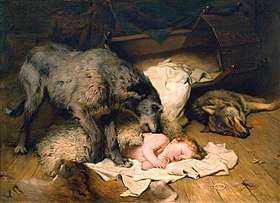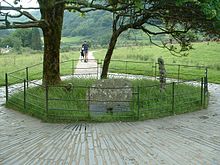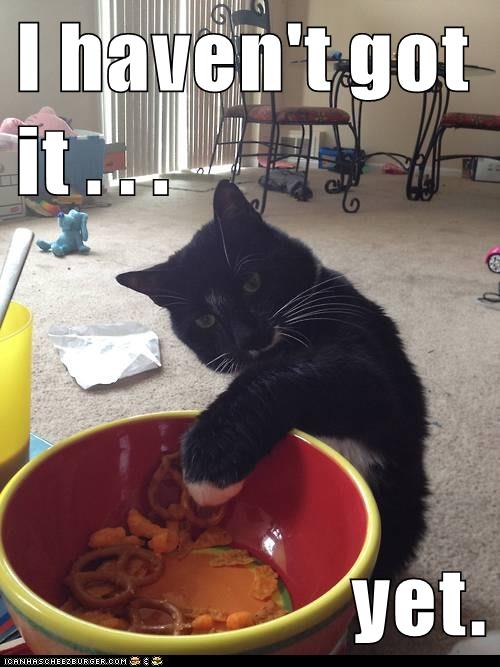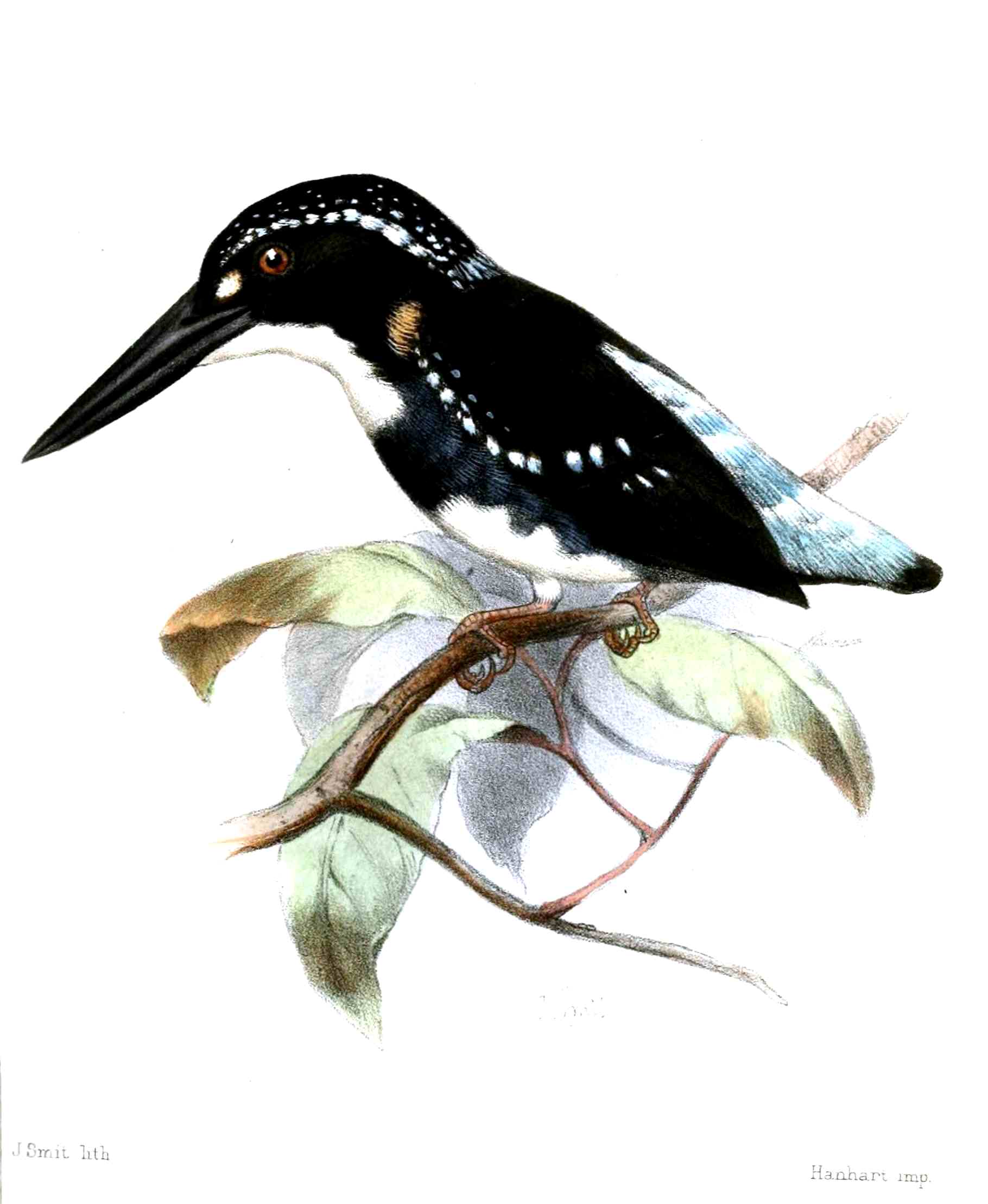(Warning that this story is kind of a downer!)
The wolf entered the room and Gellert growled at it. He placed the baby behind the crib and stood in front of it as a barrier. Gellert bared his teeth and the wolf attacked. They bit and clawed, tore and ripped at each other. The wolf pounced on the dog and they hit the crib, tipping it over and trapping the baby inside. The child cried but Gellert ignored his instinct to curl up next to it and provide comfort. He had to keep the child safe--that was his mission. Limping and in agony, he noticed the wolf was breathing heavily and gravely wounded from Gellert’s most recent attack. The dog saw his opportunity, took one last leap and sunk his teeth into the wolf. It whimpered, then stilled. Gellert had won. He went over to the child and licked its face through the bars of the crib. The child immediately stopped crying and started petting the dog. Gellert ignored his pain, blood seeping out in too many places. He had the child, safe and sound. That was all he cared about now.

A moment later, he sensed his owner outside coming quickly. Feeling that the child was safe now, Gellert ran out to meet his owner and safely guide him back to his young. Gellert felt the prince was unsettled, though, upon meeting him. His owner took one look at Gellert, covered in blood, and suddenly picked up his pace.
He’s fine, Gellert tried to say. Your baby is safe. The wolf is gone.
It was no use, though. As the prince stumbled into the bedroom, he took a quick look around at the room and cried out. Gellert didn't understand why he wasn't going to his child. It was right there, right under the crib. Could he not see it?
Anger like Gellert had never seen before flashed on the prince’s face. He pulled out his sword and swung it at Gellert, much to the dog's confusion. The last noise the dog heard was the baby’s cry and the prince’s remorseful sobs of grief.
~
Author's Note: I rewrote the story of Beth Gellert from the dog's perspective. In the original, the prince goes out hunting but is not joined by his normal companion (Gellert the dog) even after calling for him (with the horn). The prince comes back and sees Gellert covered in blood and thinks the dog had killed/eaten the prince's baby, even though Gellert had been a wonderful companion to the prince. When the prince goes into the baby's room, he doesn't see his child or the wolf (since they were covered by the crib) and assumes too quickly that Gellert had killed his child. The prince, in his grief and anger, kills the dog and a moment too late realized what had actually happened.
I wanted to tell the story from the dog's perspective because I was wondering how the actual event would have occurred (since only the aftermath is mentioned in the original story). It's probably pretty obvious that I've never written action scenes before so it's definitely something I need to work on, but it was fun to make an attempt!
I considered changing the ending so that the dog didn't die but I feel like that was a really important part of the story, especially because the original story is a Welsh legend and there is an actual grave for Gellert in the village of Beddgelert in Wales. Wikipedia has a really great article to summarize everything about the legend here.
Bibliography: Beth Gellert, Celtic Fairy Tales (1) unit. Story source: Celtic Fairy Tales by Joseph Jacobs with illustrations by John D. Batten (1892).
Image information: Beth Gellert from Wikimedia Commons
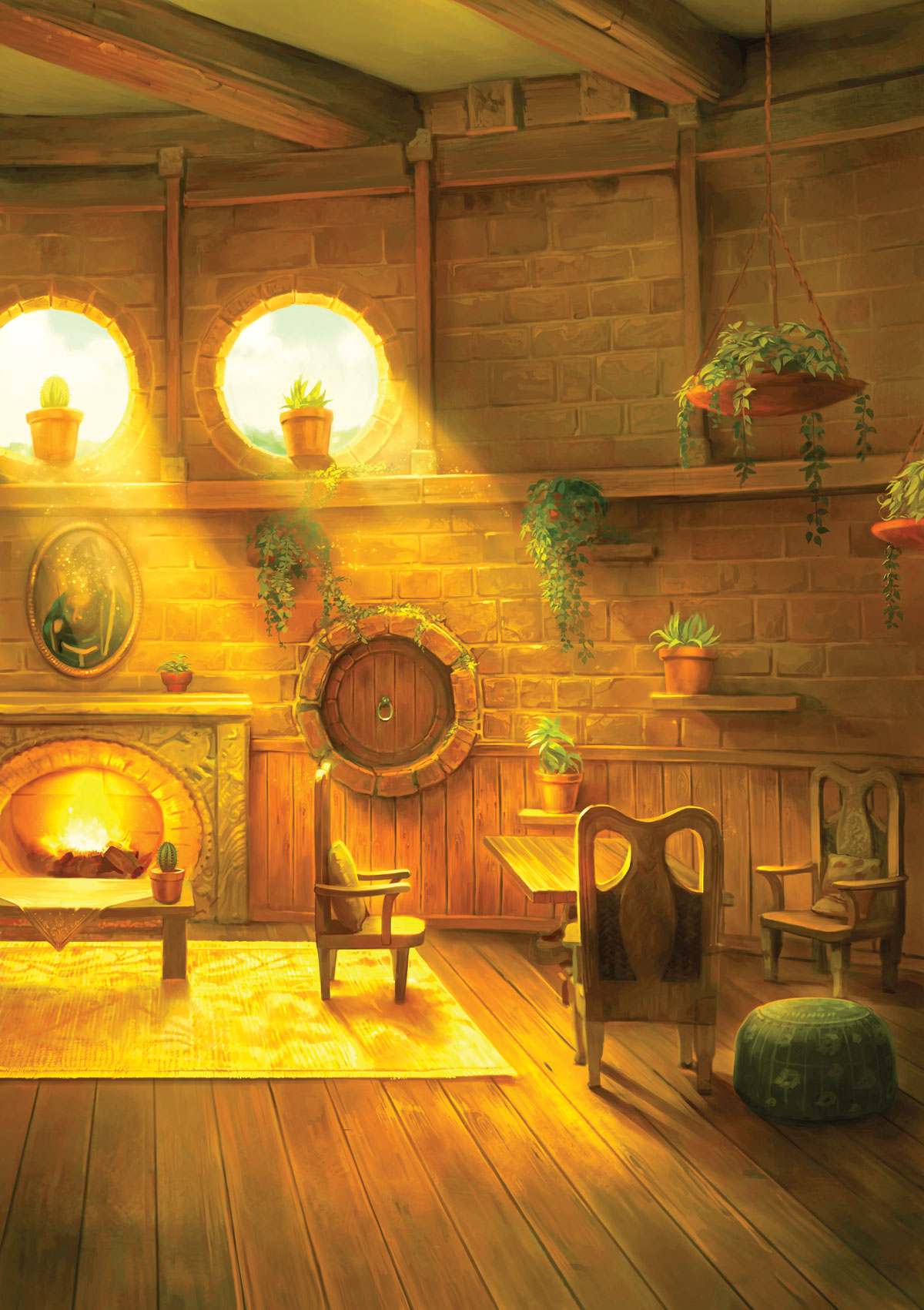
.jpg)

